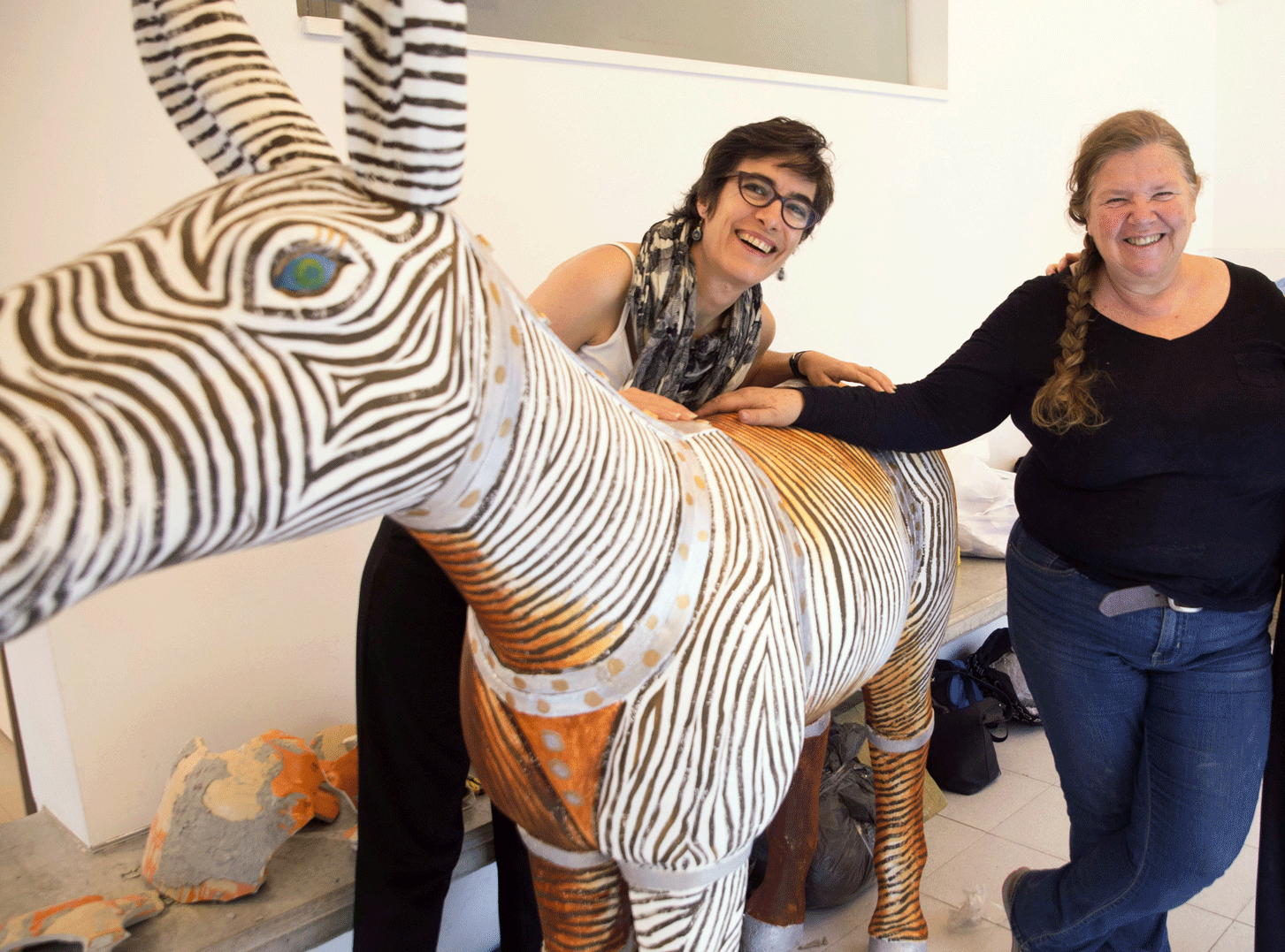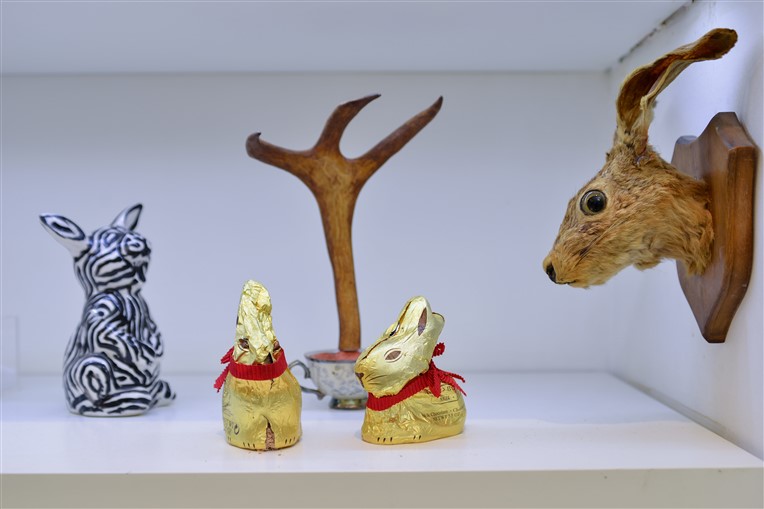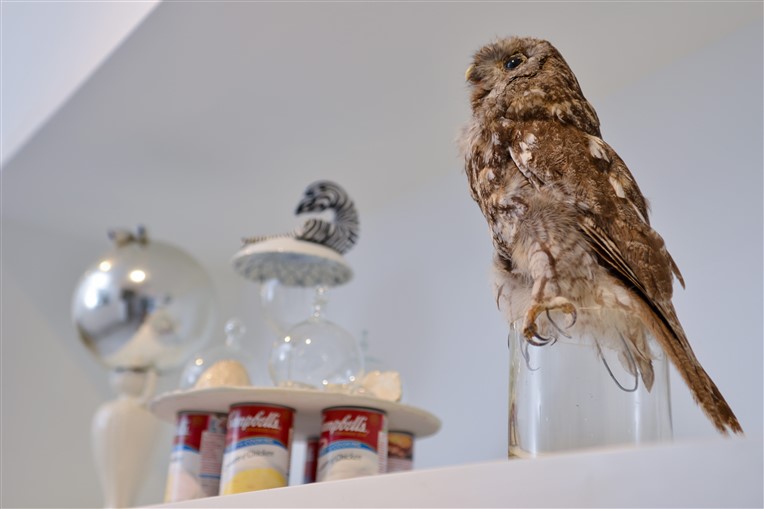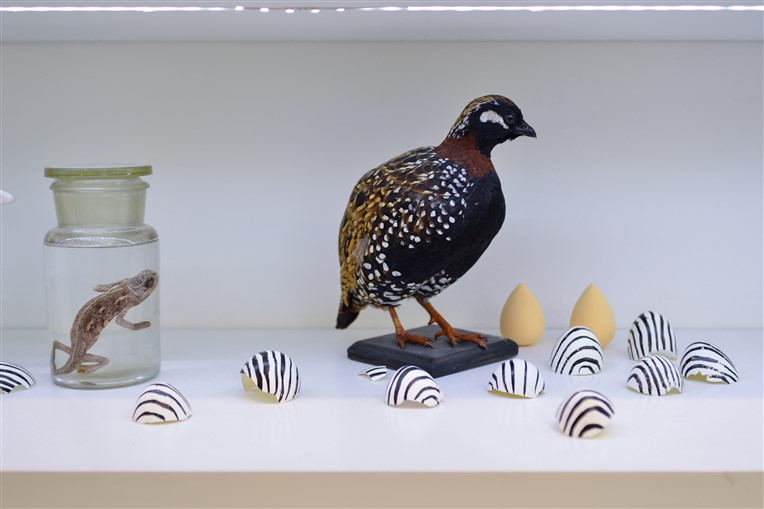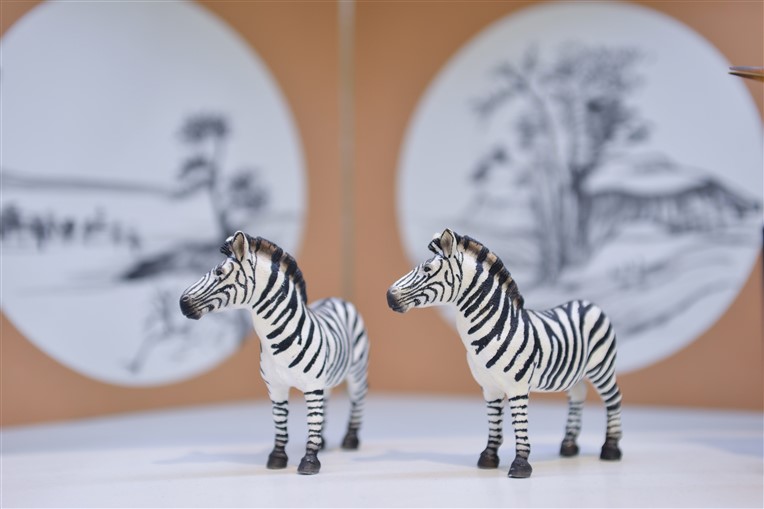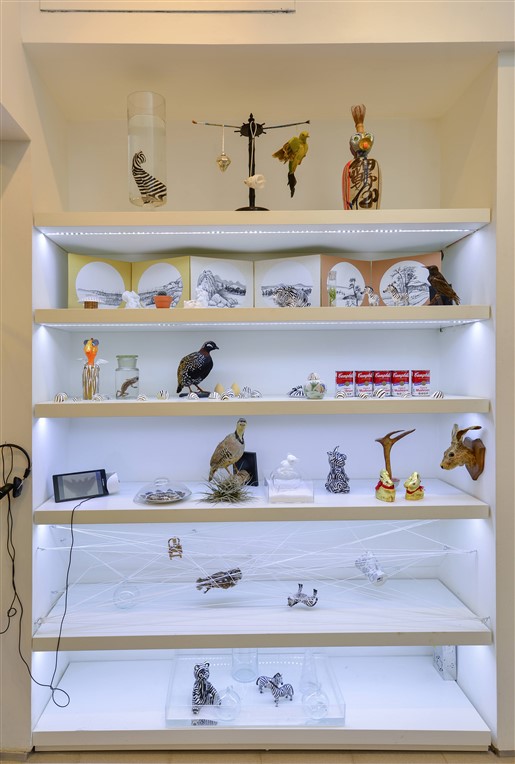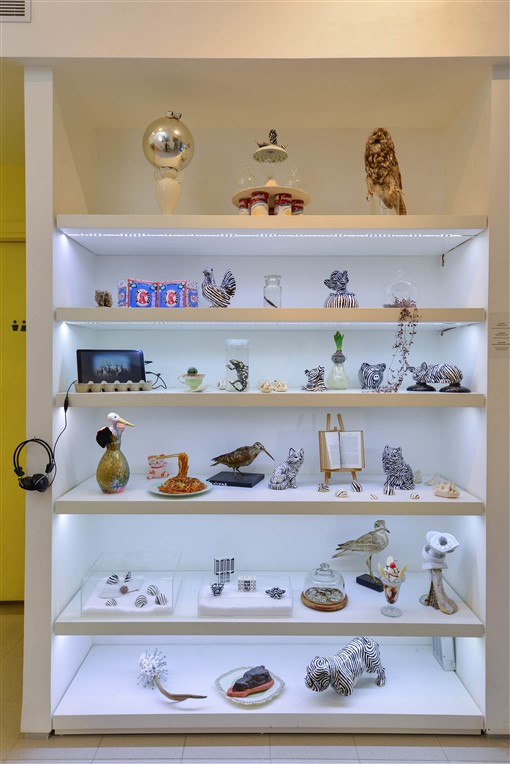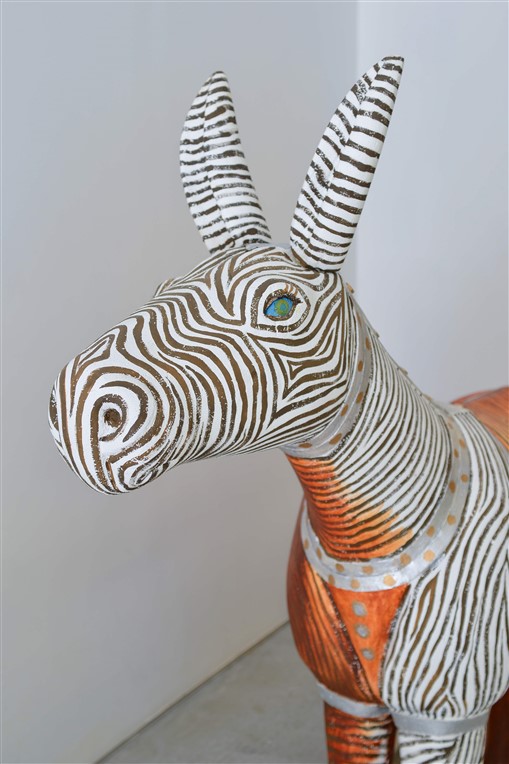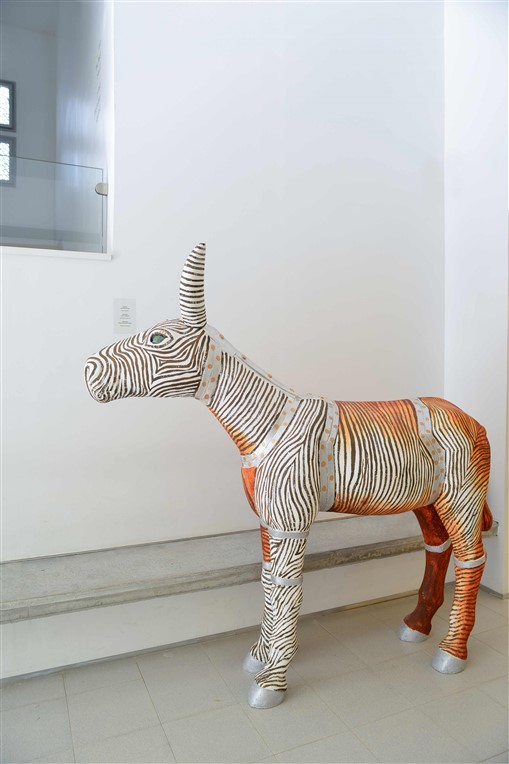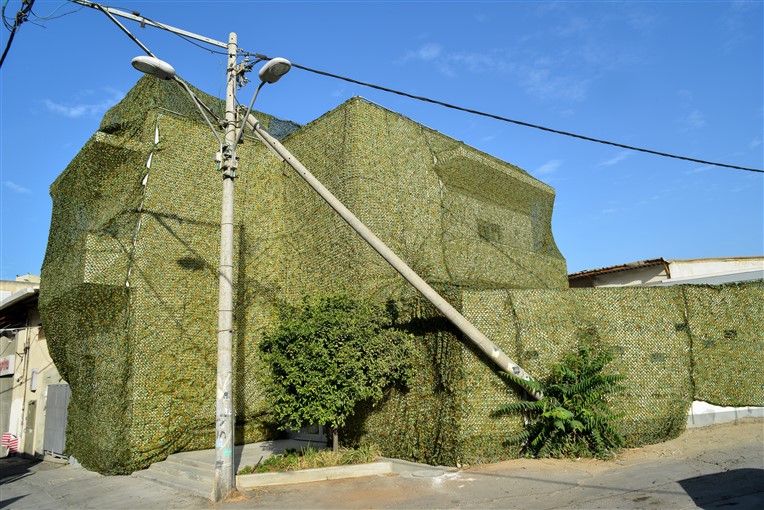Villa in the Jungle
The wrapping of the Benyamini centre in woodland camouflage nets dialogues with Christo’s wrapped monuments, and simultaneously dialogues with a subversive reference to former prime minister Ehud Barak’s controversial claim that Israel was “a villa in the jungle” (2006). Barak’s idiom that highlights the racist (implicitly Eurocentric) and imperialist discourse that insidiously underlies many Zionist ideologies and actions, and actions. Zohar explains in the Postcolonialism? video:
‘the concept of ‘Villa in the Jungle’ is a lie, and postpones Israel’s real ability to make peace with its neighbours and live truly in the Middle East, as a Middle Eastern Country, not as a European country. (21:47-22:04)
The artist has worked with camouflage for many years, starting with Dead Sea, 2004, an installation of arctic camouflage nets and salt at the Slade School of Fine Art, London. Over the years she has used camouflage in both 3D and 2D works to explore questions about identity, territory, conquest, mimicry and simulation.
Note: This installation was supported by the Arts Department, Cultural Division of the Tel Aviv-Jaffa Municipality and the Yehoshua Rabinovich Tel Aviv Foundation for the Arts
(Efraim is) becoming Quagga
Zohar’s quagga is composed of a styrofoam maquette originating from Lidia Zavadsky’s donkey sculpture, Ephraim… Ephraim (2000, Eretz-Israel Museum, Tel Aviv), and which served as a point of departure for the ‘Donkey’ exhibition held at the Benyamini in late 2012. Following two central ideas in Postcolonial theory, Mimicry and Hybridity, Zohar creates a work that mimics the event of painting donkeys with zebra stripes that took place at the Gaza zoo in 2009. Her work represents the next step in the ongoing transformation of the maquette-donkey-zebra into a quagga. Zohar’s quagga is more than just a literal parody of the hybrid Gaza donkey-zebras, as quaggas are the subject of a selective breeding project aimed at re-producing animals resembling the extinct quagga. As Baudrillard writes in Simulations, explicitly mediated environments betray us in their suggestion of an unmediated alternative. He argues that there is nothing that is not simulated, and thus our everyday experience is mediated through simulacra.
Yet, the becoming in the work’s title is key to another theoretical reference; the writings of Gilles Deleuze and Felix Guattari. In the context of personal and collective struggles to come to terms with history, and defy intolerable conditions, becoming refers to a life-long process of constant change and transformation, never a fixed idea (or form) but a process of moving from x to y. In becoming subjects can achieve an ultimate existential stage in which life is simply immanent and open to new relations, friendship and opportunities in subjects and collectives. He wrote: “History amounts only to the set of preconditions, however recent, that one leaves behind in order to ‘become,’ that is, to create something new” (1995:171). Zohar’s evocation of becoming proposes an open-ended, whimsical possibility of the transformational capacities and energies associated with the creation process.
1. An extinct subspecies of plains zebra that lived in South Africa until the 1880s. Quaggas have zebra-like stripes on the front half of their bodies, and are brown along the rear half of their body.
The Museum of (Un)Natural History
The whimsical dioramas in ‘The Museum of (Un)Natural History’ reference practices of natural history museums to present three-dimensional miniature or life-size scenes in which figures, stuffed wildlife, or other objects are displayed in a naturalistic setting against a painted background. Zohar’s dioramas similarly present an eclectic array of natural and fabricated objects, images and scenes that reflect a world of globalised hybridity. Plants, taxidermied animals, sculptures of food, and popular animal ornaments jostle with videos and painted vignettes. A polyphonic layering of inter-textual reference western culture (via the iconic Campbell’s soup collection, and Lindt chocolate Easter rabbits, and popular thrift store ornaments that the artists has transformed into zebras) and East-Asian cultures (such as via the fake food sculptures, hand shadow videos etc). The installation highlights questions of visibility and invisibility; mimicry and hybridity; assimilation, simulation and dissimilation, the museum’s claims to truth, and the contradictory privilege and pain of being an internationally reputed East-Asian scholar, artist, and curator, moving between contemporary Israel, China, the USA and Japan.

